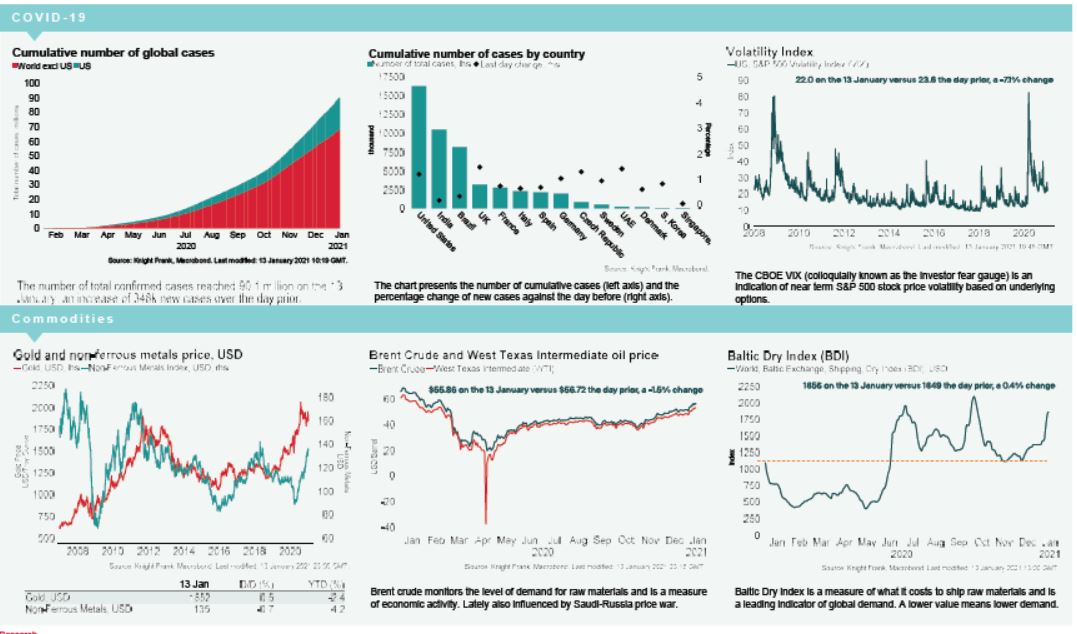Daily Economics Dashboard - 14 January 2021
An overview of key economic and financial metrics.
2 minutes to read

Download an overview of key economic and financial metrics on 14 January 2021 2020.
Lockdown: From Monday, passengers flying into the UK will need a valid negative COVID-19 test on arrival. Similarly, in the US, from the 26th January, all international arrivals must be in receipt of a negative COVID-19 test. Restrictions in Tunisia, Lebanon, Portugal, Denmark and Scotland have also tightened.
Equities: Globally, stocks are higher. In Europe, gains have been recorded by the FTSE 250 (+0.9%), DAX (+0.5%) STOXX 600 (+0.4%) and the CAC 40 (+0.3%). In Asia, the Hang Seng (+0.9%), Topix (+0.5%), S&P / ASX 200 (+0.4%) and Kospi (+0.1%) all closed higher. The CSI 300 was the exception, closing -1.9% down. In the US, futures for the S&P 500 and Dow Jones Industrial Average (DJIA) are +0.2% and +0.4%, respectively.
VIX: Following a -7.1% decline over Wednesday, the CBOE market volatility index decreased -0.4% this morning to 22.1, close to its long term average (LTA) of 19.9. The Euro Stoxx 50 volatility index has also decreased this morning, down -6.7% to 19.9, the lowest it has been since February 2020 and below its LTA of 23.9.
Bonds: The German 10-year bund yield has compressed -1bp to -0.53%, while the US 10-year treasury yield has softened +2bps to 1.11% and the UK 10-year gilt yield has held steady at 0.31%.
Currency: Sterling and the euro are currently $1.37 and $1.22, respectively. Hedging benefits for US dollar denominated investors into the UK and the eurozone are 0.61% and 1.41% per annum on a five-year basis.
Oil: Brent Crude and the West Texas Intermediate (WTI) have both decreased -0.1% to $55.99 and $52.86 per barrel, respectively.
Baltic Dry: The Baltic Dry increased for the 11th consecutive session on Wednesday, up +0.4% to 1,856, which remains the highest it has been since mid October. The index has increased +40% over the past 11 sessions, however it remains -11% below the $2,097 peak recorded on 6th October 2020.
Eurozone Industrial Production: Industrial production for the eurozone increased +2.5% over the month to November, leaving production less than -1.0% below pre-pandemic levels.